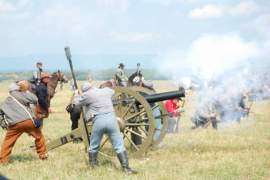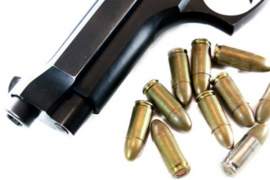
Make Sure You Know The Types of Ammunition

Just as there is many types of firearms, there are also many types of ammunition. Ammunition types can vary greatly depending on the scope and scale of firearm or application that is involved. Within the realm of firearms, there exists a vast number of different ammunition types, some designed specifically with use for a particular weapon. On a broader scale, ammunition types can vary on application or purpose, such as ordnance ammunition and naval ammunition, which have similarities with firearm ammunition, but definitely have their unique components and intended use.
Typically, the term firearms ammunition applies to the ammunition types used with conventional firearms, such as shotguns, rifles, and handguns. However, in military terms, firearms ammunition refers to the ammunition types used by an infantry soldier.
As can be assumed, even though the military employs some of the same or similar weapons available to regular citizens, a soldier is bound to have access and use weaponry that is not common to everyday people and is more powerful. Thus the term firearm ammunition itself can vary on the classification or description of types of ammunition, depending on whether it is used to describe warfare-related ammo or civilian-use ammo.
For the purpose of civilian use, ammunition types will vary depending on the type of firearm being used--i.e.: shotgun, rifle, or handgun. The ammunition type will used will also depend on its intended purpose, such as hunting, sport shooting, self-defense, education and instruction, or law enforcement.
It would serve logic that a person using a firearm for self-defense would employ a different ammunition type than that of a hunter or gun instructor. It is important to consider the uses of the firearm and ammunition when an individual decides to buy ammunition. The considerations do not end there; to further add more complexity into the mix, an individual must also consider the required size of the ammunition needed in order to properly function in the owner's firearm.
The diameter of a cartridge is known as caliber--for shotguns, the term gauge is used--which measured in both measured in inches and their metric equivalence. Many ammunition manufacturers will also use a name in conjunction with that caliber, such as .38 Special or .357 Magnum. Determining the appropriate caliber for a firearm is probably the most important factor when an individual seeks to buy ammunition.
Buying the incorrect ammunition will not only make the firearm work improperly--sometimes the cartridge or bullet will simply not fit in the barrel or magazine--but it can also cause potentially harmful discharge of the weapon, causing injury or even death. However, most firearm will express the caliber used for the firearm in the model name, 9mm Beretta or 9mm Glock for example. Once the appropriate caliber is defined, a person can then begin to consider the ammunition type in terms of purpose.
In the case of handguns, there are several options available. However, the most common ammunition type used is the hollow point or soft point bullet. The reasoning behind this trend is that a hollow point is that handguns are usually kept for either self-defense purposes or recreational use. The hollow point is designed so that it expands upon impact, allowing for less penetration of the target.
The advantage of this in the case of self-defense is that if by any chance the firearm must be used in a home or close quarters while a suspect is attacking, there is little to no chance of bullet ricochet. If the attacker is hit with a hollow point bullet, he is more likely to be disabled with one or two shots rather than several from a bullet that is designed to travel through a target. Frangible ammunition is similar to the hollow point in that it is the same in design, except the point of the bullet is filled with metal beads covered by a polymer cap.
Upon impact on hard surfaces, these beads disperse preventing ricochet. Full Metal Jacket ammunition refers to bullets that covered or jacketed by a metal alloy for the purpose of traveling faster and penetrating through a target. FMJ ammunition is most commonly used by the military because they have a reputation of rarely jamming a firearm, making them more reliable in combat. They are available for civilian use as well, and simply a matter of preference in relation to purchasing them.
Shotgun ammunition has its own various ammunition types. As mentioned before, shotgun ammunition is measured in gauges, and the appropriate one must be considered before one should buy ammunition.
There are three basic ammunition types for shotguns that are most commonly used today: Buckshot, Birdshot, and Slug loads. The choice of shotgun ammunition will also depend on the intended use or purpose of the firearm, as well as the intended target. Buckshot is ammunition that is loaded with lead balls of a fairly large diameter. This type of load is used in hunting big game animals and also self-defense. Birdshot is similar, but employs the use of smaller diameter lead balls.
As the name implies, it is commonly used in the hunting of birds. Slug shots consist of a solid lead shell that has the most destructive power out of the three and is commonly used mostly in law enforcement or in the military. In recent years, due to environmental controls and benefit, steel load versus lead load are being encouraged for use in firearms. Lead is the common preference because of its affordability, and because of its softer consistency, does not penetrate completely; steel tends to have more force and may prove dangerous due to ricochet, and over-penetration.
Ammunition types vary greatly depending on the firearm. Furthermore, ammunition types not only vary in terms of conventional firearms, but also on larger scale weapons used by the military. It is important to do the necessary research in determining which ammunition type is best suited for the situation or use, while making sure that it is the appropriate caliber or gauge for the firearm which the ammunition will be used for.
NEXT: Understanding Ammunition Purchasing




















